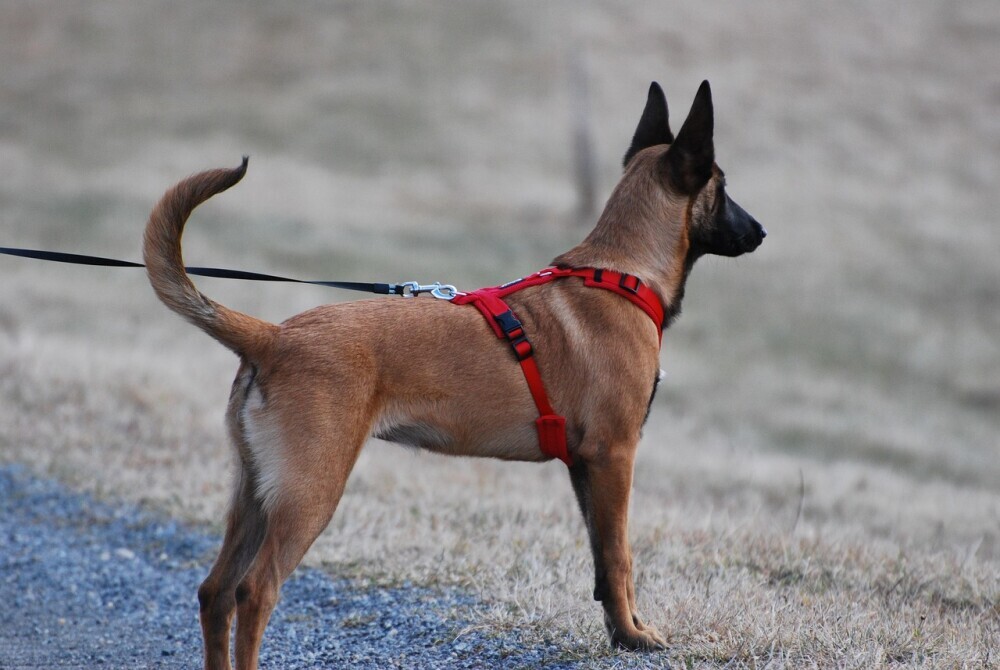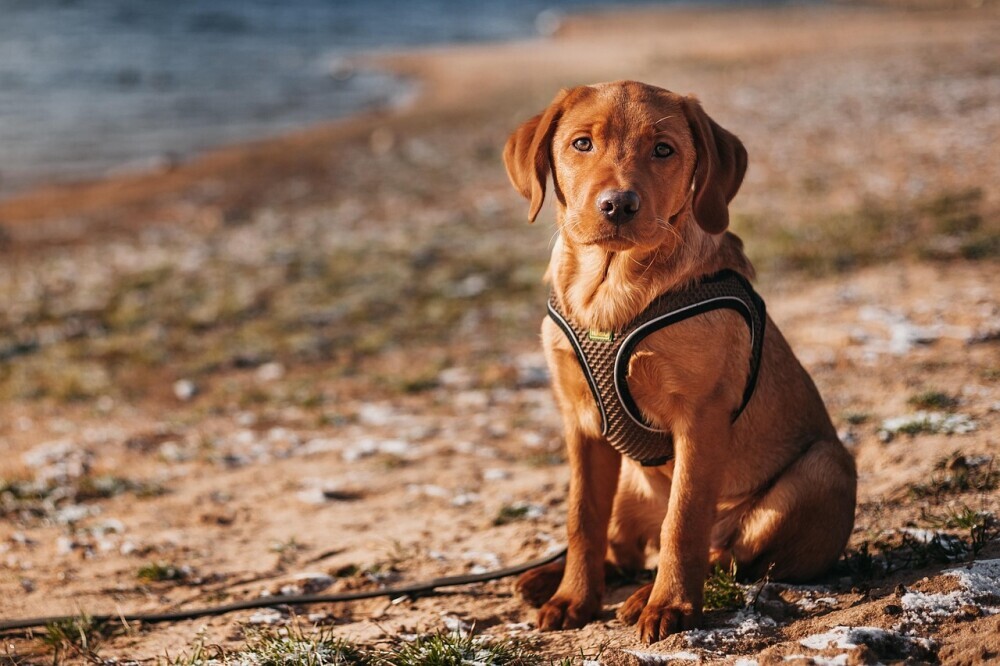Picking the best dog harness takes more than just grabbing the first one that fits. Whether you’ve got a tiny teacup pooch, a playful medium pup, or a giant gentle giant, matching the right harness style and fit to your dog’s needs makes every walk a whole lot safer and way more comfortable.

How Dog Harnesses Improve Walks
Dog harnesses are popular with pet parents looking for more control and comfort than a regular collar. These harnesses spread out pulling force over your dog’s chest or body rather than just the neck. This reduces choking or injury, especially for dogs that pull or lunge. Trainers and vets are suggesting harnesses for everyday walking more than ever, especially for smaller breeds with delicate necks or much larger breeds needing extra support.
Using a harness can also help curb troublesome behaviors, like pulling hard or sudden darting, because you have more control and can guide your pup gently. For senior or special-needs dogs, harnesses also make it easier to help them up stairs or in and out of cars.
Main Types of Dog Harnesses
If you’re new to the world of dog harnesses, all the choices can feel intimidating. Most harnesses fit into a handful of popular styles, each with upsides and downsides for different breeds and needs:
- Backclip harness: The leash attaches at your dog’s back. These are great for smaller, calm dogs or pups who don’t pull much.
- Frontclip harness: The ring sits on your dog’s chest, giving you better steering and naturally discouraging pulling.
- Dualclip harness: With both front and back rings, these harnesses offer serious flexibility—the perfect solution for training or big adventures.
- Stepin harness: Ideal for dogs that don’t want anything slipped over their head. Super easy for squirmy or nervous pups.
- Nopull harness: Designed to gently correct pulling by guiding your dog’s forward movement to the side.
- Vest harness: Usually padded and snug, best for tiny breeds needing super gentle handling.

How to Pick the Right Size Harness
Getting the fit spot on is the most important part of making sure your dog’s harness works right and feels comfortable. Most brands have a measurement guide based on your dog’s chest size (measured right behind the front legs and around the widest part). Some harnesses add neck or body length, which helps for unique breeds like dachshunds or bulldogs.
Here’s a checklist on securing a good fit:
- Use a soft tape measure to wrap around your dog’s chest and neck. Then compare with the brand’s size chart.
- Make sure you can fit two fingers between the harness and your dog’s body. Snug but not tight.
- After a short walk, check that there’s no rubbing or chafing near the legs or shoulders.
Puppies and dogs between sizes benefit from harnesses with several adjustment points so you have wiggle room as they grow or change weight. Since dogs can bulk up or slim down quickly with age or activity, double-check sizing every so often to keep things comfy and secure.
Best Dog Harness Brands For All Breeds
Several dog harness brands pop up regularly when talking with trainers, vets, and dedicated dog parents. Brand isn’t everything, but thoughtful design, sturdy materials, and comfort for every body shape make these worth a look:
- Ruffwear: Known for super tough, outdoor-ready gear (like the Front Range and Web Master harnesses). These harnesses are ideal for active dogs and those who love hiking or camping.
- Blue9 Balance Harness: A big favorite with trainers for its unique, fully adjustable design. Fits everything from barrelchested to tiny dogs with equal ease.
- PetSafe Easy Walk: Simple, effective frontclip harness popular for leashtraining and teaching polite walking.
- Voyager StepIn Air Harness: A go-to for toy and small breeds because it’s lightweight, easy to put on and take off, and gentle for long walks.
- Julius K9: These tough, tacticallooking harnesses are well-known in Europe. They’re supportive for massive breeds and working dogs.
Each brand has a size range and custom fit tweaks, but certain models work better for specific dogs. For pups with sensitive skin, opt for lots of padding and smooth seams. For escape artists, try harnesses with more straps, like the Ruffwear Webmaster, around chest and torso.
Which Brand Dog Harness Is Best?
This is easily one of the most common questions. The truth: the “best” harness is the one your dog doesn’t mind wearing, stays comfy, and keeps them safe. For all-around trustworthiness, Ruffwear is tough and super adjustable. Blue9 Balance Harness wins big from trainers handling challenging-to-fit dogs or behavior concerns. If you’re on a budget or shopping for tiny breeds, Voyager harnesses work great and are easy to use.
My advice: read actual reviews, stick to brands with solid sizing guides, and think about your dog’s energy and habits. If you can, visit a shop to testfit a few brands and find what works best for your pup.
What Dog Harness Does PETA Recommend?
PETA, focused on animal welfare, often stands behind harnesses instead of collars, especially for little dogs or pups with trachea troubles. They specifically recommend frontclip, nopull harnesses like the PetSafe Easy Walk. PETA also pushes for gentle, breathable options that avoid neck pressure. If you want to know more, PETA’s guidelines lean toward soft, padded, nopull or stepin harnesses instead of restrictive or hard correction models. Check it out yourself at PETA’s dog harness recommendations.
What Harness Do Dog Trainers Recommend?
Many pro dog trainers reach for the Blue9 Balance Harness or PetSafe Easy Walk while teaching leash skills. The Blue9 is flexible for all shapes and sizes, cuts down escape risk, and is comfy for most dogs. For large or senior dogs, the Ruffwear Front Range or Webmaster is a classic—working dog handlers use it just as often as regular pet families. Most trainers say harnesses with a frontclip work best to stop pulling, and dualclip models give you full control for any situation.
Trainers also suggest steering clear of “prong” or “correction” harnesses. Padded, adjustable harnesses are the kinder, safer way to learn leash manners and make walks positive for both of you.
Extras to Think About (and Common Mistakes)
Small details can make a world of difference in how well a harness does its job. Here are some tips from plenty of trial and error:
- Don’t skip measuring your pup—guessing by breed or weight usually misses the mark.
- Check the harness after a few walks. What feels fine in the living room might end up rubbing after a longer stroll.
- Puppies grow fast, so choose options with lots of adjustment wiggle room.
- For dogs that hate gear over their head, a stepin model can make life way less stressful.
Top Picks for Small, Medium, and Large Dogs
Each dog size comes with its own quirks. Here are some triedandtrue suggestions per size:
- Small dogs: Voyager StepIn Air (easy to use), Puppia Soft Dog Harness (gentle for sensitive pups).
- Medium dogs: PetSafe Easy Walk (for leashtraining), Ruffwear Front Range (outdoorminded, light weight), Chai’s Choice (super reflective for city walks).
- Large/Giant dogs: Julius K9 IDC Powerharness (very sturdy), Ruffwear Web Master (provides lifting support for older or service dogs), Blue9 Balance (custom fit for broad chests).
Try letting your dog wear their new harness around the house first, using some treats and praise to create happy associations with harness time.
Frequently Asked Questions
Starting out with dog harnesses brings up lots of curiosity. Here are a handful of the most common:
Which brand dog harness is best?
There’s no one-size-fits-all answer. Ruffwear and Blue9 are standouts for comfort, adjustability, and durability. Always check the sizing details and customer feedback for your specific breed.
What dog harness does PETA recommend?
PETA goes for frontclip, nopull harnesses like the PetSafe Easy Walk that avoid neck strain and prioritize gentle restraint. Soft, padded models are their preferred suggestion.
How to pick the right size dog harness?
Measure your dog’s chest (right behind the front legs) and neck, then match up with the company’s sizing chart. Go for models with several adjustment options for a secure, growing fit.
What harness do dog trainers recommend?
Loads of trainers rely on the Blue9 Balance Harness or PetSafe Easy Walk for easy adjustment and help with pulling. Look for wellpadded designs with at least one frontclip for positive training.
Wrapping Up
Finding the right harness makes walks more enjoyable and safer for both you and your furry companion. It’s all about comfort, control, and matching your dog’s unique character. A little extra time to choose and adjust a solid harness pays off in happy outings and years of fun. Happy walking!

With so many different types of dog harnesses available, I’m curious how to choose the best one for my dog’s specific needs. For example, if I have a medium-sized dog who’s energetic and tends to pull on walks but also gets nervous when things are slipped over their head, which harness style would strike the right balance between control and comfort? Also, how much of a difference does a dual-clip harness really make in training or managing different walking situations compared to using just a front- or back-clip? And finally, are there particular harness features I should look for to ensure it’s gentle enough for sensitive dogs but still effective for active behavior?
Hi Linda, these are such thoughtful questions—great to see you really considering what’s best for your dog’s comfort and behavior.
For a medium-sized, energetic dog who pulls but gets nervous with head-over harnesses, a step-in harness might be a good fit. These avoid slipping anything over the head, which can ease anxiety. Look for one with padded straps for comfort and adjustable fittings to get the right snug but gentle fit.
Dual-clip harnesses offer versatility. The front clip helps with pulling by redirecting your dog’s attention back to you, which can be great for training. The back clip is more comfortable for everyday walks and gives your dog more freedom to move. Having both means you can switch based on the situation, which is a big plus.
For sensitive dogs, prioritize soft, breathable materials and harnesses with padding on pressure points like the chest and underarms. Avoid harnesses with stiff hardware or rough edges. Also, a harness with quick-release buckles can make putting it on and taking it off easier and less stressful.
I hope this helps you find the perfect harness for your pup’s needs. If you want specific recommendations, just ask!